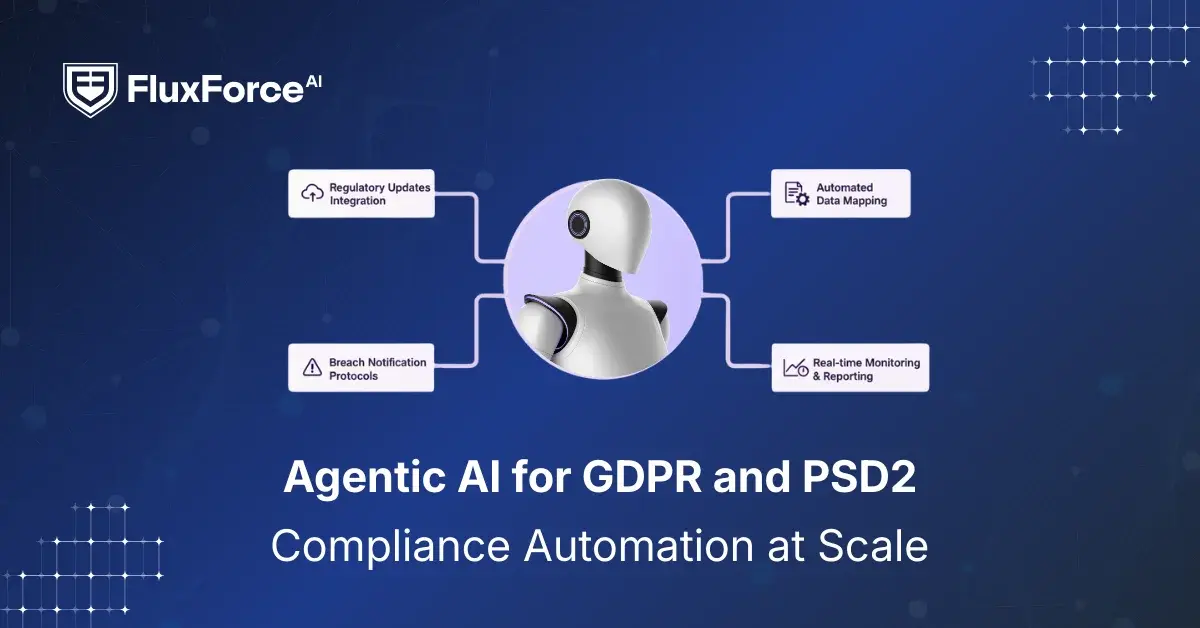Listen to our podcast 🎧
s%20in%20Banking.png)
Introduction
Risk Heads in banking carry a huge responsibility.The role requires looking ahead, finding possible threats, and preparing clear responses. Banking security has become more difficult because of AI-driven fraud, insider misuse, and targeted cyberattacks. Old methods that relied only on fixed controls no longer provide enough protection.
Traditional banking security was built on firewalls, VPNs, and one-time logins. But with cloud systems, mobile banking, and links to third-party services, the boundaries around banks have disappeared. Customers, staff, and partners all connect from many different places. A single login at the start of a session is not enough. This is why banks now need continuous user verification.
Why Continuous Verification and Zero Trust Matter for Risk Heads ?
Continuous user verification solutions for banks watch and check activity for the entire session. Every transaction and access request is tested against normal patterns. If something unusual happens, the system can flag it instantly. This gives stronger financial data protection and also proves to regulators that the bank is taking security seriously.

From a risk management in banking view, continuous verification helps in three important ways:
- Fraud Prevention: It spots unusual behavior right away and blocks harmful actions before losses occur.
- Operational Strength: It reduces the weak points in systems so that core services can keep running even under threat.
- Compliance: Regulations like PSD2, GDPR, and FFIEC guidance push banks toward real-time monitoring, making this approach necessary.
Continuous verification also improves financial services security as a whole. Customers want fast and smooth banking, but they also demand safety. By following zero trust security principles, banks can meet both needs. No user, device, or network is accepted automatically. Every step requires proof, checked again and again.
For Risk Heads, this is not just about adding controls. It is about showing leadership and proving that risks are handled before they grow. Using continuous verification with banking security frameworks shows regulators, boards, and customers that the bank is serious about safety. In this way, risk management in banking becomes active and ongoing instead of reactive.
Cyber threats are moving fast. Attackers are always changing their methods. Banks must do the same. Continuous user verification, built on zero trust security, gives banks a modern way to protect money, data, and customer trust. It is now the base for strong risk governance in the financial sector.

Shaping the Future of AI in Finance
Fluxforce research uncovers how banks and enterprises are adapting to fraud, compliance, and data challenges in 2025.
Implementing Zero Trust for Effective Risk Governance
Building on the importance of continuous user verification, banks now need to adopt a framework that ensures both security and compliance. Zero trust security provides Risk Heads with the tools to manage risks proactively while maintaining oversight over sensitive operations.

Strengthening Risk Controls with Zero Trust
Older banking network security models relied on fixed perimeters, firewalls, and one-time authentication. With cloud services, mobile banking, and third-party access, these controls leave gaps that attackers can exploit.
Key Benefits for Risk Management
Adopting zero trust services helps Risk Heads:
- Limit unauthorized access: Every user, device, and transaction is verified continuously.
- Standardize security policies: Applies consistent protection across branches, remote teams, and third-party systems.
- Demonstrate compliance: Provides clear evidence to regulators that financial institution risk management is actively enforced.
Using zero trust as a service reduces the burden of managing multiple tools and integrates risk monitoring directly into existing banking operations, improving financial services security without increasing complexity.
Continuous Verification as a Governance Mechanism
Extending Security Beyond Login
Multi-factor authentication (MFA) secures the entry point, but it cannot stop session takeovers or insider misuse. Continuous user verification keeps an eye on activity to ensure it is legitimate.
Continuous verification supports:
- Fraud prevention: Identifies unusual patterns in real time.
- Data protection: Reduces exposure of sensitive financial information.
- Audit readiness: Creates detailed logs for regulators and board reporting.
Integrating Verification into Risk Governance
Embedding continuous verification into zero trust architecture for banking security allows Risk Heads to:
- Monitor risk continuously rather than reactively.
- Show regulators, auditors, and boards that risk management is systematic and proactive.
- Align technical security measures with governance and compliance objectives.
Optimizing Identity Verification and Advanced Authentication for Risk Heads
As banks adopt continuous user verification and zero trust security, Risk Heads need to ensure that identity verification and advanced authentication systems are reliable, effective and easy to manage.
Strengthening Identity Verification
Importance for Risk Heads
Strong identity verification ensures only authorized users can access sensitive systems. This is key for financial services security and supports risk management in banking sector. For Risk Heads, proper verification also provides evidence that financial data protection is active, which is important for regulators and boards.
Simple Approaches That Work
Banks can strengthen identity verification methods in financial services by adopting these practices:
- Biometric authentication: Banks can use fingerprint scans, facial recognition, or voice verification for employees and high-value customers.
- Behavior monitoring: It can also track normal user activity to quickly spot unusual actions or patterns.
- Device verification: Ensure that access is only granted from recognized and secure devices.
Governance Benefits
Implementing these measures helps Risk Heads to:
- Minimize insider threats and unauthorized account access.
- Maintain audit-ready records for regulators and board reporting.
- Integrate verification into banking access control frameworks for complete oversight.
Advanced Authentication for Continuous Security
While multi-factor authentication (MFA) secures the initial login, modern threats require ongoing verification. Continuous authentication for banking applications monitors user activity throughout the session to every action is valid.
This results in:
- Early threat detection: Flags suspicious or unusual activity before losses occur.
- Audit-ready evidence: Provides clear records to support risk management in banks.
- Seamless operations: Detects unauthorized access without interrupting legitimate users.
Integration with Zero Trust
Combining advanced authentication with zero trust architecture for banking security gives Risk Heads real-time control. It ensures that banking security rules are applied consistently and align with governance and compliance goals.
Building a Proactive Risk Management Framework
For Risk Heads, using identity verification methods in financial services with advanced authentication creates a proactive approach to risk management. Main benefits include:
- Continuous monitoring of users and devices.
- Reduced risk of fraud, insider threats, and unauthorized access.
- Clear, auditable records for regulators, boards, and internal audits.
These steps help banks protect sensitive financial data, maintain customer trust, and operate with a proactive, governance-focused security framework.
Strategic Risk Mitigation and Reporting for Risk Heads
After implementing continuous user verification and zero trust security, Risk Heads must focus on turning these measures into practical strategies for managing risks and governance. This section shows how to monitor, report, and manage risks effectively while keeping financial services security strong.

Setting Up Risk Mitigation Policies
Clear policies help define what is acceptable risk for different banking operations. These are key for banking security and risk management in banks. Important steps include:
- Define risk limits for transactions, access requests, and system activity.
- Use continuous user verification solutions for banks to trigger alerts or actions automatically when limits are exceeded.
- Make sure policies meet regulatory requirements like PSD2, GDPR, FFIEC, and internal governance rules.
Having clear policies helps Risk Heads respond quickly and consistently, reducing exposure and protecting sensitive data (financial data protection).
Real-Time Risk Monitoring and Alerts
Monitoring risks in real time is essential for proactive risk management in banking sector. Risk Heads can use zero trust as a service and analytics to spot problems early. Steps include:
- Use dashboards to track banking network security.
- Monitor unusual access, suspicious activity, and abnormal patterns continuously.
- Set automated alerts to respond quickly, preventing fraud or data leaks.
Real-time monitoring helps Risk Heads take immediate action, limiting losses and supporting financial institution risk management.
Reporting and Governance
Clear reporting is key for Risk Heads to show that risks are managed effectively. Best practices include:
- Create audit-ready reports for regulators, boards, and internal teams.
- Include risk management banking metrics and summaries of incidents in daily operations.
- Show that risk management in banking industry is proactive, organized, and transparent.
Good reporting builds trust with regulators, boards, and management, and connects security actions to governance goals.
Continuous Improvement
Managing risk is an ongoing process. Risk Heads should use insights from monitoring to improve security and policies over time. Key actions include:
- Update access rules, authentication methods, and policies based on real-time data.
- Track the results of zero trust services and continuous user verification solutions for banks to make improvements.
- Train staff to respond effectively while keeping financial services security intact.
Strengthen Trust in Global Trade

Conclusion
As per changing banking threats, Risk Heads require systems that work continuously. Continuous user verification and zero trust security track user activity, devices, and transactions, helping prevent fraud and protect critical data. Identity verification methods in financial services and advanced authentication make sure only the right users can access sensitive systems. Clear risk mitigation policies and real-time alerts make it easier to respond quickly, while audit-ready records show regulators and boards that financial institution risk management is being actively enforced.
Adopting zero trust as a service and continuous verification solutions for banks helps simplify security and apply consistent rules across all systems. This makes risk management in banking sector proactive rather than reactive, strengthens banking network security, and builds trust with customers, boards, and regulators. By continuously improving policies and controls, Risk Heads can create a resilient, governance-focused security framework that protects the bank’s data, assets, and reputation while preparing for current and future risks.


s%20in%20Banking.webp)



Share this article